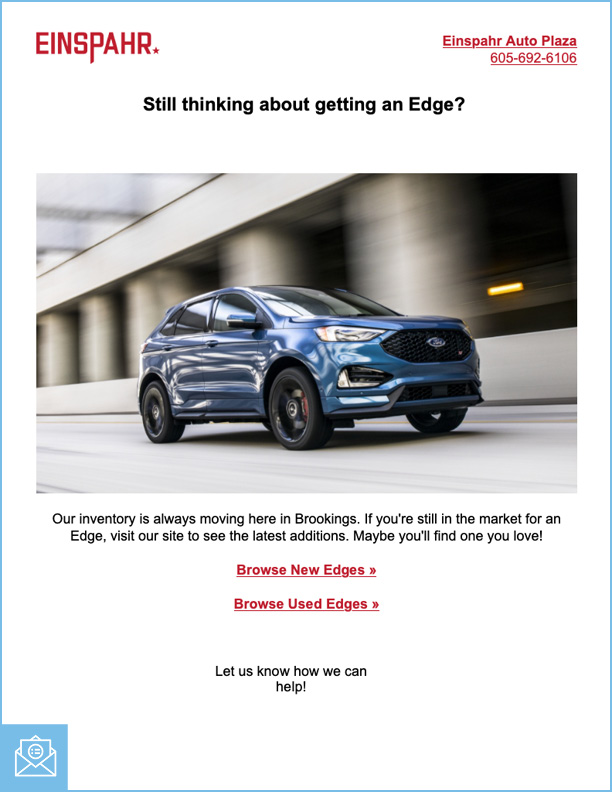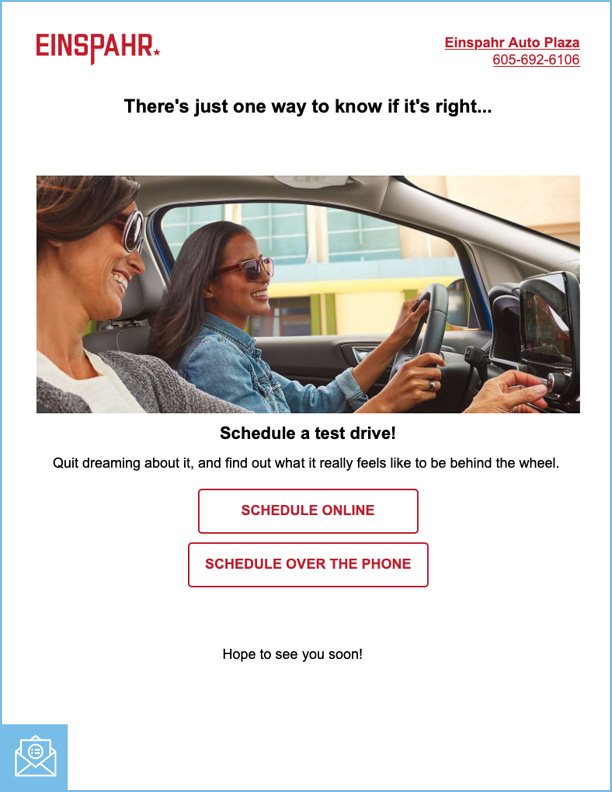
Prioritize the Right Leads with Lead Scoring for Automotive
There is no perfect car-buying journey, but there is a way you as an auto dealer can nurture every unsold lead in your CRM at their unique point in the buyer’s journey: with automotive lead scoring.
Wouldn’t it be nice if every single car shopper had the same timeline for purchase?
A dealer can dream, right?
The reality is that while some people are ready to purchase the day they step foot on your lot (or, more likely, the first time they visit your website), others will take months or longer to finally drive away in one of your vehicles.
The average car shopper spends nearly 89 days in market before making a purchase. Additionally, the road to purchase involves 23 common touchpoints, 18 of which are digital.
What are you doing to nurture these shoppers throughout their buying journey? How do you prioritize the leads who are ready to purchase sooner than later?
The answer is lead scoring.
What Is Auto Lead Scoring?
Lead scoring is, well . . . scoring your leads. The higher the score, the hotter the lead.
This makes sense, but just how does a lead earn a high lead score — or any score, for that matter?
Leads earn a score based on a combination of information they provide your dealership, as well as important event activity (AKA web browsing and email engagement) in which they partake.
To determine a lead score, dealerships can set up custom parameters in their customer relationship management (CRM) system or email marketing platform (if it indeed has lead scoring capability) based on the lead’s information and event activity.
These parameters should be dynamic, meaning that as information gets added or event activity increases for the lead, their score will also increase.
Lead scoring doesn’t stop there. Once a contact hits a certain score that your dealership identifies, you can set up automatic, personalized emails to send to the lead, encouraging them to keep shopping, schedule a test drive, or whatever message you believe they need to hear.
We should also mention that the term lead scoring may be called something else, such as lead tracking or lead nurturing, depending on the CRM and/or email marketing platform you are using.

How to Create a Successful Lead Scoring Strategy
Just like no shopper’s buying journey is the same, no two dealerships will have the same lead scoring strategy.
However, we’re giving you our top three recommendations for building a lead scoring strategy that nurtures the buyer’s journey while making your job of prioritizing leads easier.
1. Identify Key Lead Information and Activity
You don’t need to know absolutely everything about your lead, but knowing their email and preferred vehicle model is a good starting point.
Additionally, if a lead has visited key pages on your website (such as a search results page [SRP], vehicle description page [VDP], financing page, or test drive page), or if they have engaged with recent emails, they may be interested in buying soon.
Decide which points of information are most valuable to you in scoring a lead, and document that criteria.
2. Assign Points Based on Known Lead Information and Activity
Now that you know which data points are important, how do you actually calculate a lead score?
Here’s an example of how a dealership could assign points for a lead:
- Email is known: 5 points
- Lead model is known: 50 points
- Clicks a link in an email: 10 points
- Visits a SRP, VDP, or specials page: 20 points each
You can also set up your lead scoring strategy to subtract points based on information (like recent purchase dates), so these contacts are moved from lead to customer.
3. Build Personalized Emails to Nurture the Sales Process
If, for example, your team decides that a lead score of 25 qualifies a contact as a “warm lead,” you’ll want to nurture them through their shopping journey with personalized, automated emails.
The goals of these emails are to encourage the lead to keep shopping and to keep the line of communication open, like in this example:

Now, let’s say that after a lead receives an email like the one above, they continue to browse your website and engage with other emails. This lead’s score is rising, and they’re likely ready to purchase in the very near future.
Continue to nurture them with another personalized email, like this:
At this point, the lead is hopefully close to making a purchasing decision. You’ve nurtured them throughout their journey, and now it’s time for your sales team to close the sale.
Lead Scoring Considerations
Like most digital marketing strategies, it takes time for lead scoring to be successful. You won’t see a dramatic influx of leads or sales due to lead scoring within one month of implementing the process.
However, if you understand the value of sending the right message to the right lead at the right time, lead scoring has the ability to optimize your digital marketing efforts.
It’s also important to regularly audit these automated emails, making updates as needed.
Optimize Your Digital Marketing with Lead Scoring & Tracking
Lead scoring can be intimidating. But, when integrated into a dealership’s digital marketing strategy, it has the ability to nurture leads throughout their buying journey, leading them to a purchase at your dealership.
And with the right software (and the right people using it), lead scoring and tracking can help you streamline your entire sales process and improve your bottom line.
See Your Real Return on Investment »


![Human vs AI A/B Test [Spoiler Alert: Humans Win!]](https://9clouds.com/wp-content/uploads/2024/02/Volvo-dealership-1-600x388.png)


